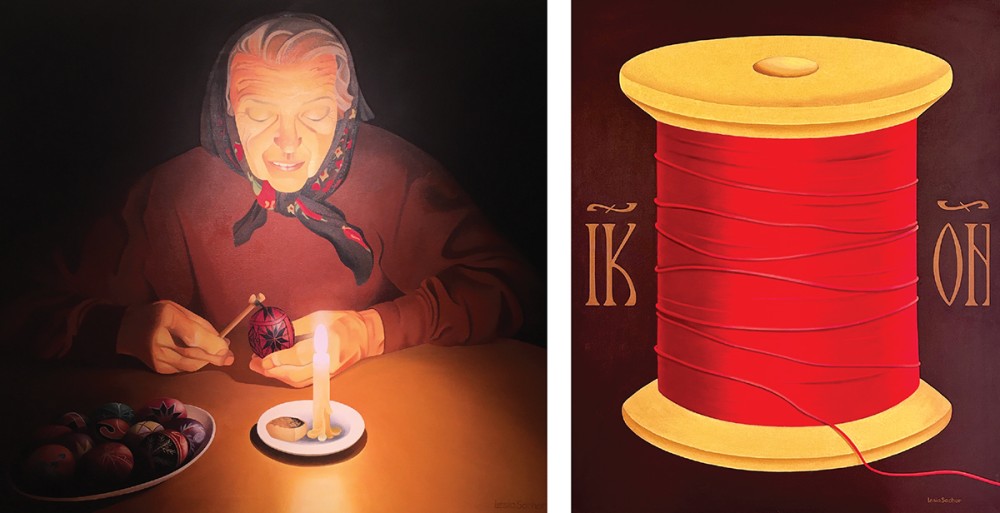Lesia Sochor’s Ritual (left) and Icon (right)

Images used by permission of the artist
Three years after Russia’s invasion of Ukraine, the war is in a newly uncertain and perilous state amid shifting geopolitics. While the pain of Ukrainians on the front lines and at home is uniquely acute, the Ukrainian diaspora watches anxiously from afar. In Maine, artist Lesia Sochor—born to Ukrainian immigrant parents—has found ballast creating works that channel her religious and cultural heritage.
In preparation for Easter, Sochor teaches workshops around New England, passing on the practice of decorating pysanky, raw eggs embellished with richly detailed patterns produced by wax resistance. In Ritual, she depicts her late mother—illuminated by the saintly glow of a single candle—using the time-honored kistka tool to apply melted beeswax to an eggshell. Her mother’s hair is wrapped in a traditional babushka, which in a series of works becomes a symbol of piety and resistance, an emblem of the everywoman or of Mother Ukraine herself.
In another series, a simple spool of thread becomes an object for sacred contemplation. The gold disc which crowns the spool evokes a Eucharistic paten, while the thin, red thread drops from the body like a rivulet of blood or wine. In the Bible—as well as in later Jewish tradition, especially Kabbalah—a crimson thread or cord is a sign of protection. In the book of Joshua, the unlikely heroine Rahab ties a scarlet cord in her window at the behest of Joshua’s spies so that she and her family may be spared when the Israelites capture Jericho.




